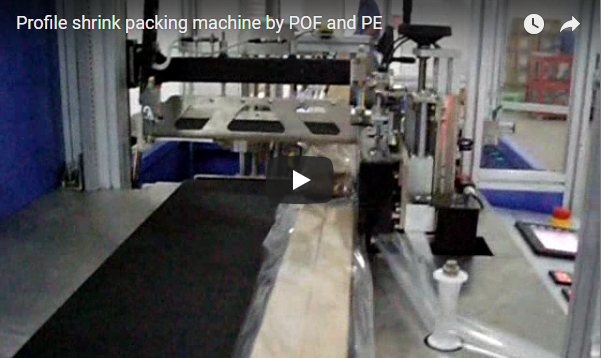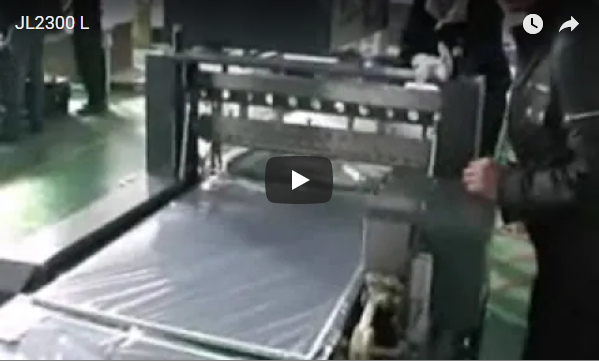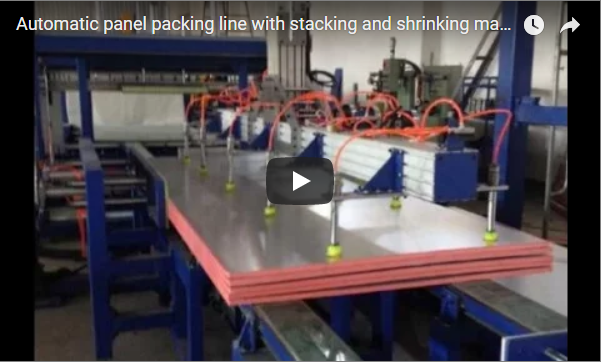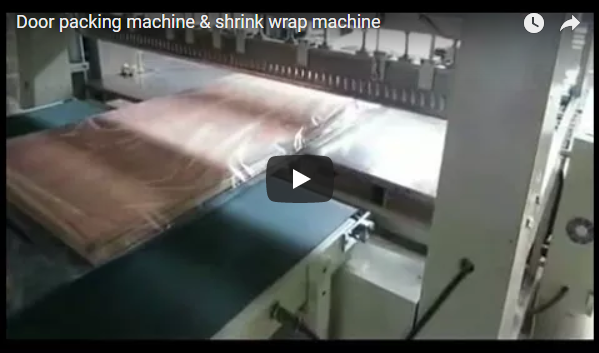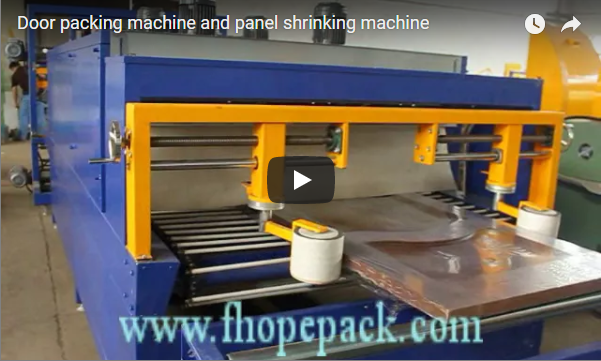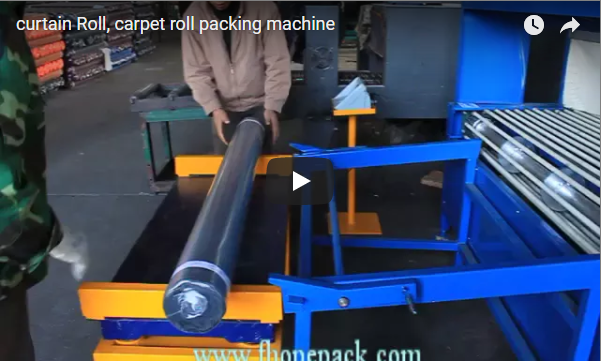Elevating Product Presentation and Protection: A Deep Dive into the FHOPE Door Panel Sealing and Shrinking Machine
In industries where large, flat items like doors, panels, and frames are manufactured and distributed, ensuring product integrity from the factory floor to the end-user is paramount. Damage during transit or storage not only incurs costs but also impacts brand reputation. The FHOPE Door Panel Sealing and Shrinking Machine offers a robust automated solution designed to address these challenges head-on, providing superior protection and a professional finish. This article explores the technical specifications, operational benefits, and strategic advantages of integrating such equipment into your packaging workflow.
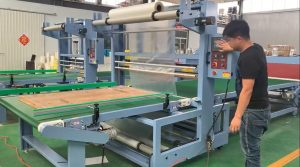
1. The Critical Role of Specialized Packaging for Doors and Panels
Doors, panels, and frames are susceptible to various forms of damage, including scratches, dents, moisture ingress, and dust accumulation. Traditional packaging methods can be labor-intensive, inconsistent, and may not provide adequate protection, especially for full C-face coverage. An automated sealing and shrink-wrapping system creates a tight, conforming barrier that safeguards the product effectively.
2. Introducing the FHOPE Solution: Automated Sealing and Shrinking
The FHOPE machine is specifically engineered to handle the dimensions and requirements of door panels, wooden panels, frames, and similarly sized products. It automates the process of enclosing the product in shrink film, sealing all sides for complete coverage, and then conveying it through an integrated heat shrink tunnel. The result, as highlighted, is a "nice package for selling" – visually appealing, tamper-evident, and well-protected.
3. Technical Specifications: A Closer Look at Capabilities
Understanding the technical data is crucial for assessing the machine's suitability for specific operational needs. While exact specifications can vary based on configuration, typical parameters for a system like this include:
- Applicable Product Dimensions:
- Length: Typically accommodates standard door lengths (e.g., up to 2500mm or more).
- Width: Designed for common panel widths (e.g., up to 1300mm).
- Height/Thickness: Adjustable range (e.g., 10mm - 100mm).
- Packaging Speed: Dependent on product size and film type, often ranging from 3-8 packs per minute.
- Sealing System: Utilizes robust sealing bars (potentially L-bar configuration or continuous side sealers followed by an end seal) designed for consistent, strong seals on polyethylene (PE) or polyolefin (POF) shrink films.
- Shrink Tunnel:
- Heating Elements: High-efficiency heaters designed for uniform temperature distribution.
- Temperature Control: Precise PID temperature regulation (e.g., adjustable up to 200°C).
- Airflow System: Optimized circulation for consistent film shrinkage around the product contours.
- Conveyor: Variable speed, often with heat-resistant rollers or belts.
- Film Compatibility: Engineered primarily for PE shrink film, known for its durability and puncture resistance, suitable for heavier items like doors. Thickness range typically supported (e.g., 40-100 microns).
- Power Requirements: Varies by model size (e.g., 380V, 3-Phase, 50/60Hz), with significant consumption from the heat tunnel (e.g., 20-40 kW).
- Control System: Often features a PLC (Programmable Logic Controller) with an HMI (Human-Machine Interface) for ease of operation, parameter adjustment, and diagnostics.
4. Core Components and Engineering Design Insights
The machine's performance relies on the synergy of its key components:
- Infeed Conveyor: Accurately positions the product for film wrapping. May include centering guides.
- Film Delivery System: Holds film rolls and precisely dispenses the required amount of film. Often includes perforation wheels for air escape during shrinking.
- Sealing Unit: Creates the bag around the product. The design must ensure durability and consistent heat for reliable seals across the film width. Full side sealing is crucial for complete enclosure.
- Transfer Conveyor: Moves the sealed product seamlessly into the shrink tunnel.
- Shrink Tunnel: The heart of the shrinking process. Design focuses on energy efficiency, uniform heating, and controlled airflow to achieve optimal shrinkage without damaging the product or film. Insulation is key.
- Outfeed Conveyor: Allows the product to cool and exit the system, potentially integrating with downstream material handling.
- Safety Features: Emergency stops, safety interlocks on doors, and guarding are integral design aspects.
5. The Automated Workflow: Sealing to Shrinking
The operational sequence typically follows these steps:
- Loading: The door or panel is placed onto the infeed conveyor (manually or via automation).
- Film Encapsulation: The machine automatically draws film from the rolls, enveloping the product.
- Sealing: The sealing bars activate, cutting the film and creating secure seals around all edges of the product.
- Transfer: The loosely bagged product moves into the shrink tunnel.
- Shrinking: Controlled heat within the tunnel causes the film to shrink tightly around the product's contours.
- Cooling & Exit: The tightly wrapped product exits the tunnel onto the outfeed conveyor, where the film cools and solidifies.
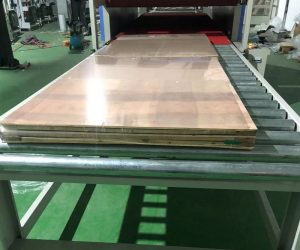
6. Key Advantages for Manufacturers and Distributors
Integrating the FHOPE machine offers tangible benefits:
- Enhanced Product Protection: Full C-face sealing shields against dust, dirt, moisture, and scuffing during handling and shipping.
- Professional Presentation: A tight, clear shrink wrap enhances product appearance, conveying quality and care – critical for retail or direct customer delivery.
- Increased Throughput: Automation significantly speeds up the packaging process compared to manual methods.
- Labor Optimization: Reduces manual labor requirements, allowing staff to be redeployed to higher-value tasks.
- Consistency: Ensures every package meets the same high standard.
- Potential Material Savings: Optimized film usage compared to less precise manual wrapping.
7. User Experience and Application Focus
From a user perspective, the focus is on reliability, ease of operation, and the quality of the final package. Operators appreciate intuitive controls (HMI) for adjustments like sealing time, temperature, and conveyor speed. Maintenance access is also a practical consideration. The machine finds applications primarily with:
- Door Manufacturers
- Window Frame Producers
- Furniture Component Suppliers (Tabletops, Panels)
- Building Material Distributors
The resulting package is not just protective but also facilitates easier handling and inventory management due to its stable and unitized form. The "full sides sealed" aspect is particularly important for preventing ingress during outdoor storage or transport.
8. Conclusion: A Strategic Investment in Packaging Excellence
The FHOPE Door Panel Sealing and Shrinking Machine represents more than just packaging equipment; it's a strategic investment in product integrity, operational efficiency, and brand presentation. By providing robust, automated, full-coverage sealing and shrinking, it helps manufacturers and distributors ensure their products arrive in pristine condition, ready for sale or installation. For businesses dealing with large panel-type products, exploring such automated solutions is essential for maintaining competitiveness and customer satisfaction in today's demanding market.
(Note: If images were present in the original post or added during the update, ensure descriptive alt text is included for each image to improve accessibility and SEO. For example: alt="FHOPE machine sealing a wooden door panel in shrink film")
(To learn more about specific packaging solutions or industry standards, consider visiting resources like the Packaging Machinery Manufacturers Institute (PMMI) or exploring FHOPE's official product documentation if available.)

